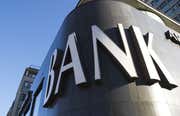After checking accounts, savings accounts are the next biggest thing most people think about when they think about banking. Having a savings account to securely store extra cash that you can access easily in an emergency – but not so easily that you'll spend the money on things you didn't intend to – is a key component of any good personal financial plan. While a checking account helps safeguard your money and facilitate bill paying – and an investment account helps you achieve your mid-term and long-term goals – a simple savings account helps you set aside money for near-term goals like going on a vacation, paying a large upcoming bill or establishing an emergency fund. In this section, we'll discuss the different types of savings accounts that banks offer and the pros and cons of each. (Find out how to grow your savings in Protect Your Savings From Their Greatest Threat – You.)
Regular Savings Accounts
Almost all banks offer a regular, basic savings account that you can sign up for in person, by phone or online. This is the type of savings account you might get by default from a traditional brick-and-mortar bank. The difference between this account and a checking account is that it generally doesn't have check-writing privileges and it may have a higher opening deposit requirement. It may also have a higher daily minimum balance requirement. Savings accounts also have a limit of six monthly withdrawals or other outgoing transactions. Because of banks' efforts to market their different savings vehicles, don't expect this type of account to be called "regular savings." It may be called "Statement Savings," "Goal Savings," "Day-to-Day Savings," “Way2Save,” “Savings Plus” or something else that the bank’s marketing department thought was clever.
A regular savings account is easy to set up and maintain. You can link it directly to your checking account at the same bank and quickly and easily move money between the two accounts. Having these two accounts linked can sometimes help you avoid overdraft charges and minimum balance fees from your checking account.
The main disadvantage of this type of account is its often-pitiful interest rate that might be close to zero. The national average savings account rate as of early 2017 was just 0.06%, according to the FDIC. If you're serious about making your money work for you, you'll probably want to minimize the amount of money you keep in a regular savings account – if you use one at all – and opt for a more powerful savings vehicle instead. (For more on this topic, see Savings Accounts Not Always the Best Place for Cash Assets.)
Online Savings Accounts
An online savings account differs from a regular savings account in that you deal with it exclusively through the internet (sometimes also by phone, but not in person) and it pays a higher interest rate. For example, as of March 2017, one of the highest savings account interest rates available for an online savings account was 1.25% on balances of $10,000 or more with PurePoint Financial. Meantime, Chase, the largest bank in the United States, was paying 0.01% on its savings accounts, regardless of account balance. Many online savings accounts were offering interest rates around 1.0%.
Some online savings accounts are offered by the same banks that offer regular checking and savings accounts, while others are offered by banks that do not have physical branches and exclusively offer online products. If you're comfortable with online banking, an online savings account may be a better choice for you than a regular savings account because of its greater earning potential. Many online savings accounts also do not have a minimum deposit to open an account, minimum daily balance requirements or a monthly maintenance fee, unlike many savings accounts associated with brick-and-mortar banks.
With some types of savings accounts, both regular and online, the rate of interest the bank will pay you depends on how much money is in your account. These accounts are called tiered rate accounts. Customers with higher balances will earn interest at a higher rate. (Learn more about high-rate savings accounts in Handling High-Yield Savings Accounts.)
Money Market Deposit Accounts
The money market is a segment of the financial market where financial instruments with high liquidity and very short maturities are traded. The money market is considered a safe place to put money due the highly liquid nature of the securities and their short maturities. While money market investment accounts are not without risk, money market deposit accounts are virtually risk-free because they are FDIC insured, just like checking and savings accounts. Money market deposit accounts should not to be confused with money market mutual funds, which are offered by investment companies and are not FDIC insured.
Money market deposit accounts tend to have higher minimum balance requirements than regular or online savings accounts. This minimum usually ranges from $100 to $2,500. There may be a monthly fee associated with this type of savings account. The interest paid will be higher than that on a regular savings account balance, but possibly less than what an online savings account would pay. For example, as of March 2017, Ally Bank, an online-only bank, pays 0.85% APY on money market account balances and 1.0% APY on savings account balances. From a functional standpoint, you may not notice much, if any, difference between a money market deposit account and a regular or online savings account. (To learn more, read Money Market Mutual Funds: A Better Savings Account.)
Certificates of Deposit
A certificate of deposit (CD) is a savings certificate entitling the bearer to receive interest. In many ways, it is similar to a bond, except that instead of paying interest periodically over the life of the investment, it pays all its interest at once when it matures. Also, because CDs are a bank product, they come with FDIC insurance.
A CD has a maturity date and a specified fixed interest rate, and can be issued in any denomination. The term of a CD generally ranges from one month to five years. The amount of interest a CD pays depends on its term, with longer terms generally paying higher rates. CDs, like savings accounts, will pay more or less depending on market conditions. In the low interest rate environment the United States has experienced since 2008, CDs have paid little, but they often pay more than even an online savings account does, depending on which banks you’re comparing. The FDIC’s March 20, 2017, report put the average 60-month (5-year) CD rate at 0.79%, significantly higher than the average savings account rate of 0.6%. Meanwhile, Capital One 360 was offering one of the highest rates in the nation according to Bankrate: 2.30% on a 60-month online CD.
Along with the higher interest rate you'll earn with a CD come restrictions on withdrawing your money. Taking your money out of a CD before it matures will usually cost you money in the form of an early withdrawal penalty. (Find out everything you need to know about this investment vehicle in our Certificates of Deposit tutorial.)
Automatic Savings Plans
Many banks offer automatic savings plans, and these can be a great way to develop a regular habit of saving money. At some banks, establishing such a plan is also a way to obtain lower banking fees.
An automatic savings plan is something you need to set up. It simply involves choosing a specific dollar amount that you're willing to have automatically transferred from your checking account to your savings account, usually once a month and on the same day every month (except when that day falls on a weekend or holiday).
If you have an idea of how much money you generally have left over after meeting your expenses each month, you can use this as the amount that you transfer automatically to your savings account. On the other hand, you may want to allocate your extra funds to several different places each month, such as a retirement account, investment account and savings account. In this case, you'll want to choose a smaller amount. If you don't know how much money you can safely contribute to a savings account each month, creating a budget will help you figure it out. You can always start with a modest amount, such as $10, and increase it later.
Although some people are nervous about the idea of committing a certain amount to save automatically each month, most investment gurus say that paying yourself first is a key component of building wealth. The other major benefit of establishing an automatic savings plan is that you don't have to remember to set aside money for savings each month – your bank will do it for you.
While you may find that you notice the reduced amount in your checking account each month at first, after a few months, you will probably get used to doing without that money and learn to enjoy watching the balance in your savings account grow.
In the next section, we'll discuss how to keep the money in your checking and savings accounts safe.
Banking: Basic Banking Precautions and Safeguards
-
 Personal Finance
Personal FinanceHandling High-Yield Savings Accounts
Is a high-yield savings account right for you? Read on to find out what they have to offer. -
 Personal Finance
Personal FinanceBanking 101
Do you really need a bank account? A quick survey of banking and how a relationship with a bank can organize your financial life. -
 Retirement
RetirementAnytime Is The Right Time To Start Saving For Retirement
If you're looking to start building your nest egg but don't know how to do it, read on. We give you a few easy tips on how to save. -
 Investing
InvestingMoney Market Accounts with the Highest Interest Rates
Money market savings accounts can offer higher interest rates than regular or even high-yield bank savings accounts – and perks like these. -
 IPF - Banking
IPF - BankingForeign savings accounts: Should you open one?
Find out whether opening a savings account in a foreign bank might make sense for your money. Learn the pros and cons – as well as how to establish one. -
 IPF - Banking
IPF - BankingProtect Your Savings From Their Greatest Threat - You
Watch your savings magically grow as you make withdrawals a headache and deposits a breeze. -
 Personal Finance
Personal FinanceThe 5 Best Alternatives to Bank Savings Accounts
Find out about some of the most profitable available alternatives to depositing money in a traditional bank passbook savings account. -
 Personal Finance
Personal FinanceWhat Else Banks Can Help With (Besides Banking)
As competition increases and technology advances, banks, credit unions and savings institutions are offering more services intended to attract customers. -
 Personal Finance
Personal FinanceBest Ways to Grow Your Savings Accounts
Creating a savings plan is key to building a solid financial foundation. Here's how to do it. -
 Retirement
RetirementHow to Start Saving For Retirement
The most important part of a retirement fund is to simply start doing it. Learn about the problems, risks, and how to start saving for retirement.



